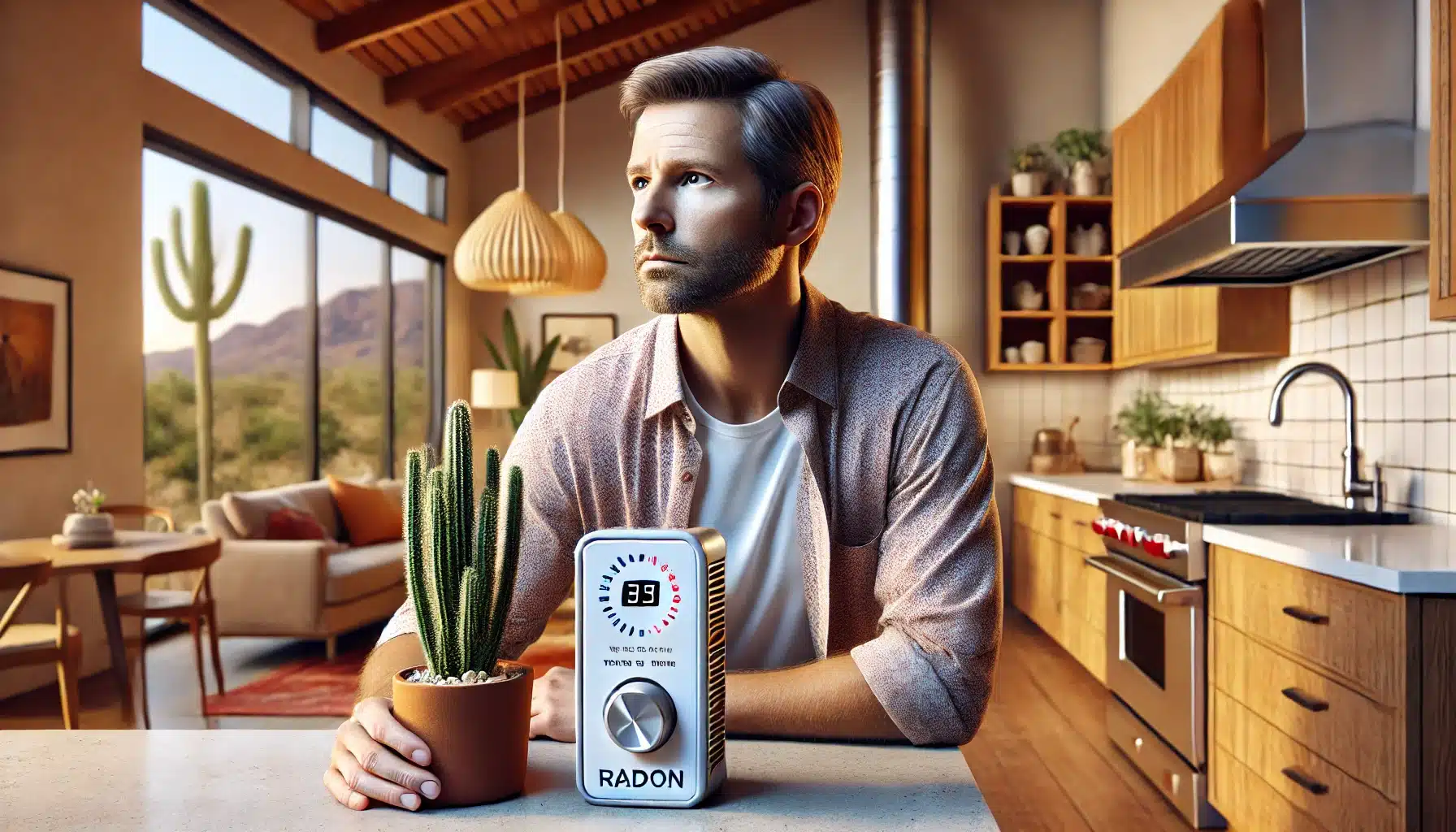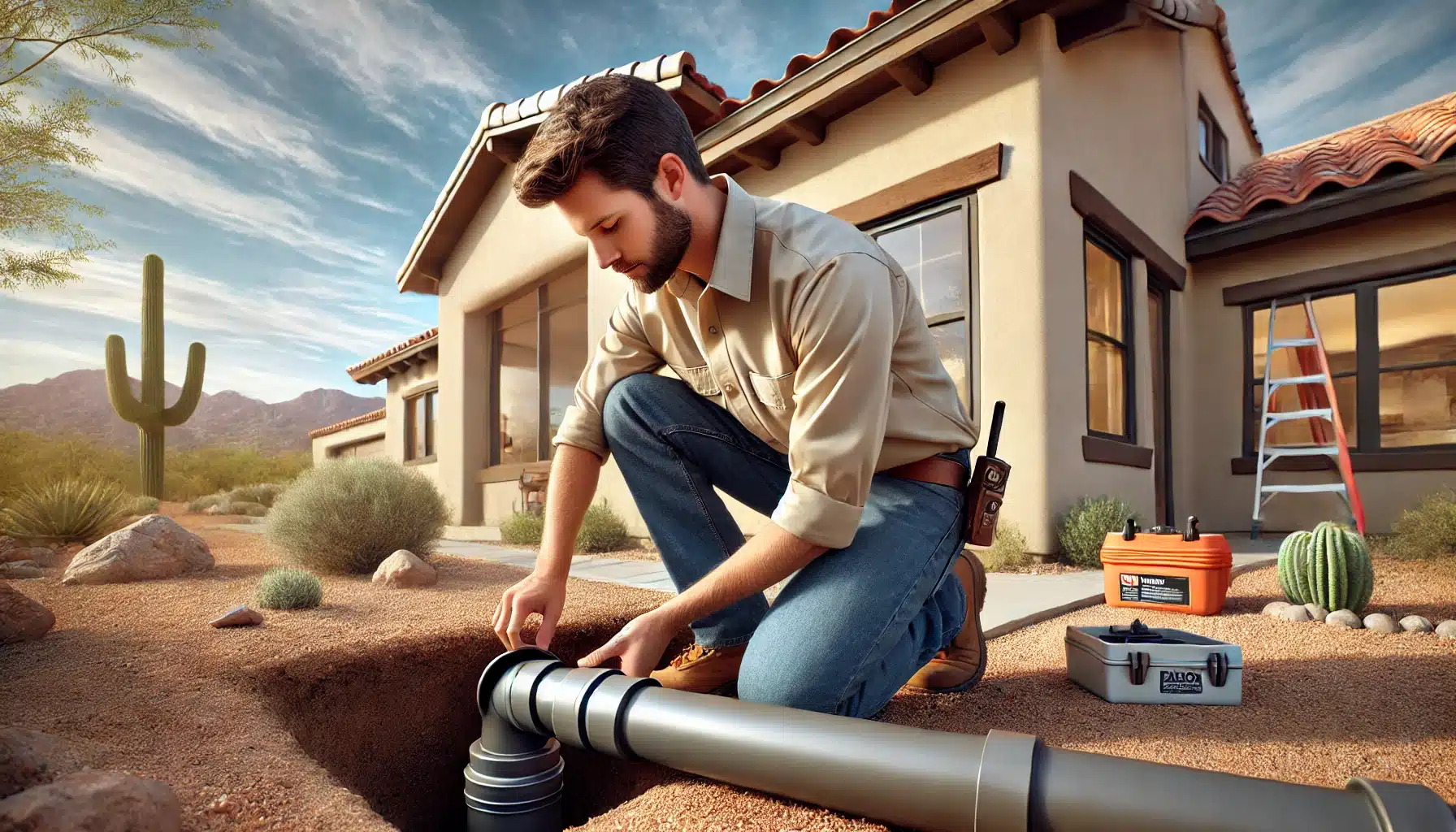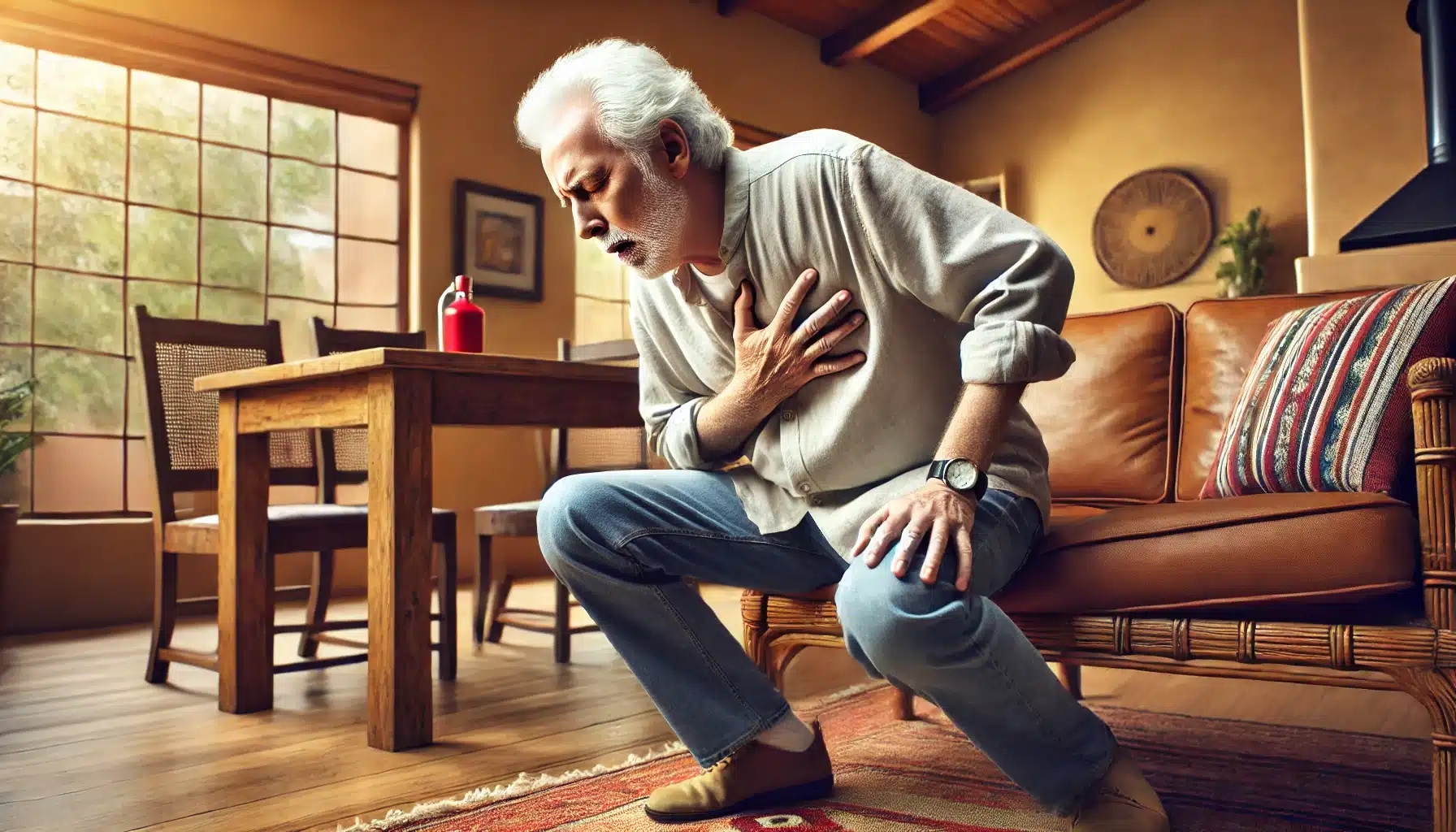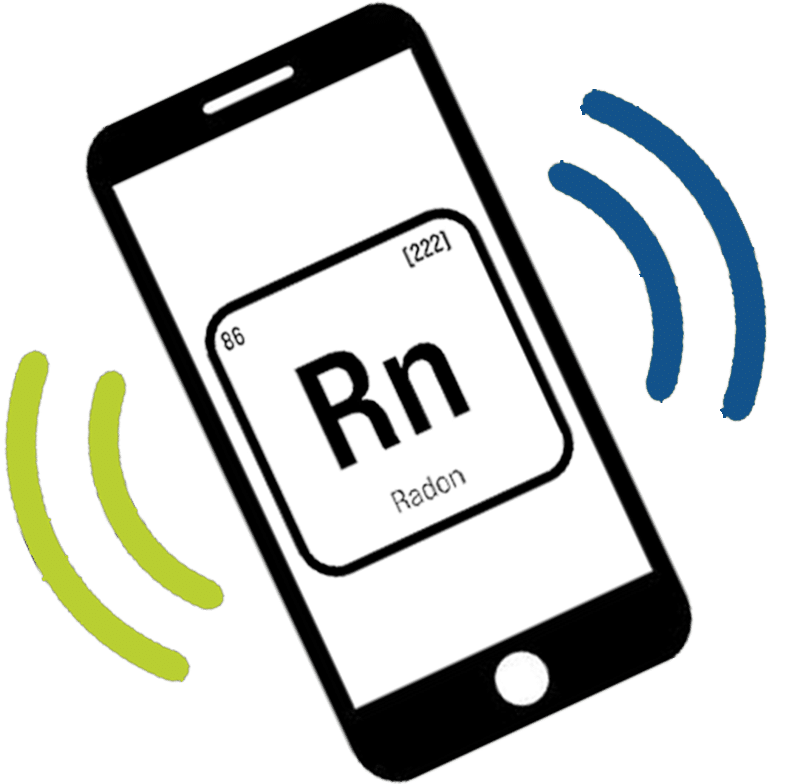Solved: Symptoms of Radon Exposure in Arizona
- Kaber Robinson

Radon gas is a silent health threat many Arizona homeowners do not realize is present in their homes. Unlike carbon monoxide, radon has no smell, color, or immediate warning signs, making it impossible to detect without testing. While commonly associated with colder states where basements are prevalent, Arizona homes are still at risk. Radon seeps through slab foundations, crawl spaces, and cracks in floors and walls, accumulating indoors over time.
According to the Arizona Department of Environmental Quality (ADEQ), certain areas of the state, including Maricopa, Pima, and Coconino counties, have homes with radon levels exceeding the Environmental Protection Agency’s action level of 4.0 pCi/L. Arizona’s warm climate leads to tightly sealed homes for energy efficiency, which can contribute to radon buildup and prolonged exposure.
Key Takeaways
Radon exposure is typically asymptomatic at first, with health effects appearing years after prolonged inhalation.
Lung cancer is the most serious risk associated with radon, with symptoms such as persistent cough, shortness of breath, chest pain, wheezing, and coughing up blood.
Arizona homes without basements are susceptible to radon due to soil composition, slab foundations, and crawl spaces.
The EPA recommends mitigation if radon levels exceed 4.0 pCi/L. Professional radon mitigation can significantly reduce indoor radon levels.
Regular testing is the only way to detect radon. ADEQ advises homeowners to test their homes every two years.

Radon in Arizona: Why Homeowners Should Be Concerned
Arizona’s geology contributes to radon gas entering homes, especially in areas with high uranium content in the soil. Many Flagstaff, Prescott, and Sedona homes have been recorded with radon levels well above the EPA action limit. The state’s dry, desert climate means homes are often built with slab-on-grade foundations, but radon still enters through cracks and openings in the structure.
Kaber Robinson, owner of Arizona Radon, emphasizes that many homeowners mistakenly believe radon is not a problem in Arizona.
“One of the biggest misconceptions is that Arizona homes are safe from radon because they don’t have basements. We’ve tested homes across Phoenix, Tucson, and Flagstaff, and many have levels that require mitigation. Radon seeps through any opening in the foundation, regardless of home design.”
Because radon exposure does not cause immediate symptoms, many Arizona residents do not realize they have been exposed until years later, when lung-related health issues develop.
Common Symptoms of Radon Exposure
Radon exposure damages lung tissue over time, leading to chronic respiratory issues. Many symptoms resemble those of lung infections or smoking-related conditions, making early detection difficult. Arizona’s tightly sealed homes increase the risk of radon buildup and prolonged exposure.
Persistent Cough
A dry, nagging cough that lasts for weeks or months may be an early sign of radon-related lung damage. Unlike seasonal allergies or mild respiratory infections, this cough does not improve with medication.
“A persistent cough that doesn’t go away should always be a red flag, especially for those who have never smoked but live in high-radon areas,” says Robinson. “In Arizona, where homes rely on HVAC systems and are tightly sealed to keep out the desert heat, radon can accumulate without homeowners realizing it.”
As lung damage progresses, the cough may become more severe, sometimes leading to coughing up blood.
Shortness of Breath
Breathing difficulties often develop gradually after years of radon exposure. Many people feel like they are struggling to take deep breaths, even while at rest. This symptom is often more noticeable during physical activity and may worsen over time. Arizona’s dry climate already makes breathing difficult for individuals with pre-existing respiratory conditions, and radon exposure can exacerbate these issues.
Chest Pain and Tightness
Chest pain from radon exposure often feels like squeezing pressure. Some individuals experience sharp pain that worsens when breathing deeply, while others feel a constant dull ache. Since Arizona homes are often closed off to conserve energy, radon can become more concentrated, increasing the risk of lung-related symptoms.
Wheezing and Whistling Breath Sounds
Wheezing occurs when the airways become narrowed or inflamed, making breathing difficult. Radon exposure can cause:
A high-pitched whistling sound while breathing
Difficulty exhaling
Increased wheezing at night or after physical activity
Robinson notes that many people exposed to high radon levels in Arizona develop wheezing even if they have never had asthma or lung disease before. This symptom can be particularly concerning in areas where air quality is already affected by desert dust and pollution.
Coughing Up Blood
Coughing up blood is a serious warning sign that radon exposure has caused significant lung damage. Individuals may notice:
Bright red blood in mucus
Dark, coffee-ground-colored spots in phlegm
A persistent cough combined with blood-streaked mucus
A doctor should evaluate frequent or unexplained blood in a cough immediately. Arizona homeowners experiencing this symptom should also test their indoor air quality for radon.

Long-Term Health Risks of Radon Exposure
Increased Risk of Lung Cancer
Radon is the leading cause of lung cancer in non-smokers and a major risk factor for smokers. The American Cancer Society reports that long-term radon exposure increases the likelihood of lung cancer by 16 percent, with symptoms often developing five to 25 years after exposure begins.
“Radon-related lung cancer is preventable, but only if people take action early,” Robinson warns. “Arizona’s warm climate keeps homes sealed up for much of the year, which can trap radon inside and increase exposure over time.”
Frequent Respiratory Infections
Radon exposure weakens the lungs, making individuals more vulnerable to infections like bronchitis and pneumonia. Symptoms include:
Recurring chest colds
Persistent phlegm and congestion
Lingering respiratory illnesses that take longer to clear
Given Arizona’s dry climate, individuals with chronic respiratory issues should be especially vigilant about radon exposure.
How to Reduce Radon Exposure in Arizona
Testing Your Home for Radon
The EPA and ADEQ recommend testing every two years, as radon levels fluctuate.
Short-term radon test kits (48-hour tests) provide a quick snapshot of radon levels.
Long-term radon tests (90-day or more) offer more accurate readings.
Professional radon testing ensures precise measurement and identifies the best mitigation options.
Radon Mitigation Options
Mitigation systems can effectively reduce radon levels by up to 99 percent. Common solutions include:
Active Soil Depressurization (ASD) redirects radon away from the home.
Sealing foundation cracks to limit radon entry.
Improving ventilation in crawl spaces and basements to reduce radon accumulation.
Conclusion
Radon exposure is a serious but preventable health risk in Arizona. Because symptoms often take years to develop, regular testing is the only way to ensure a safe indoor environment.
Steps to Protect Your Health:
Test your home every two years, especially in high-risk areas.
Monitor persistent respiratory symptoms such as chronic cough, shortness of breath, or chest pain.
Seek medical attention for unexplained breathing issues, wheezing, or coughing up blood.
Install a radon mitigation system if levels exceed 4.0 pCi/L.
By staying proactive and testing regularly, Arizona homeowners can significantly reduce the risk of radon-related lung cancer and protect their long-term health.

Bio:
Kaber Robinson, a second-generation radon mitigator and the founder of Arizona Radon, has accumulated 30 years of experience in the industry. A nationally certified radon measurement and mitigation professional, Kaber’s commitment to health and environmental sustainability led him to the radon field after graduating from a renowned technical college in Kansas.
Gaining invaluable experience with a leading radon mitigation company in the United States, he traveled extensively to install systems across various environments. Today, Kaber applies his extensive knowledge and practical skills at Arizona Radon, where he ensures that each project adheres to the strictest standards of quality and safety.




